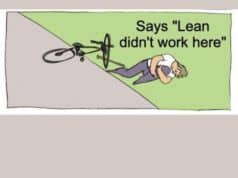Wal-Mart and Target recently announced that they intend to share the EPC data derived from their Radio Frequency ID (RFID) systems with thirteen of their Consumer Packaged Goods (CPG) suppliers.
“The joint announcement is a positive signal to the retail and consumer goods markets that leaders in both industries are focused on more cooperative, results-oriented solutions,” says Erik Michielsen, director of RFID of Oyster Bay, NY-based ABI Research. “As analytical tools develop and as CPGs cooperate more with one another, the CPG-retailer relationship will evolve from a retail ‘push' market to a more balanced retail/CPG ‘push-pull' market,” Michielsen notes.
Anyone have any ideas on what a ‘push-pull' system looks like? Certainly real time data, as can be provided with RFID systems, will be an enabler to reduce inventories in the supply chain and eliminate some waste from the process. The ‘pull' portion of the system would allow for goods to be ordered and replaced as they are purchased. The ‘push' element of Michielsen's statement however, seems to point to the fact that CPG manufacturers and suppliers are still willing to stock shelves with items consumers don't necessarily want.
Anyone else find this use of lean jargon confusing?
What do you think? Please scroll down (or click) to post a comment. Or please share the post with your thoughts on LinkedIn – and follow me or connect with me there.
Did you like this post? Make sure you don't miss a post or podcast — Subscribe to get notified about posts via email daily or weekly.
Check out my latest book, The Mistakes That Make Us: Cultivating a Culture of Learning and Innovation:










Yeah, anything from those analysts tends to be very buzzword-laden.
I think that some “push” might be necessary when you have a supply chain with long lead times. Even Dell, which does Build to Order PC’s has to forecast components that have long lead times from Asia.
The suppliers “push” based on forecasts then Dell “pulls” at the very last minute based on actual need.
It’s nowhere near as efficient as the supply chain would be if you could produce PC parts in a Toyota-style supplier part right there in Austin, or Nashville, or North Carolina. But that won’t be happening.